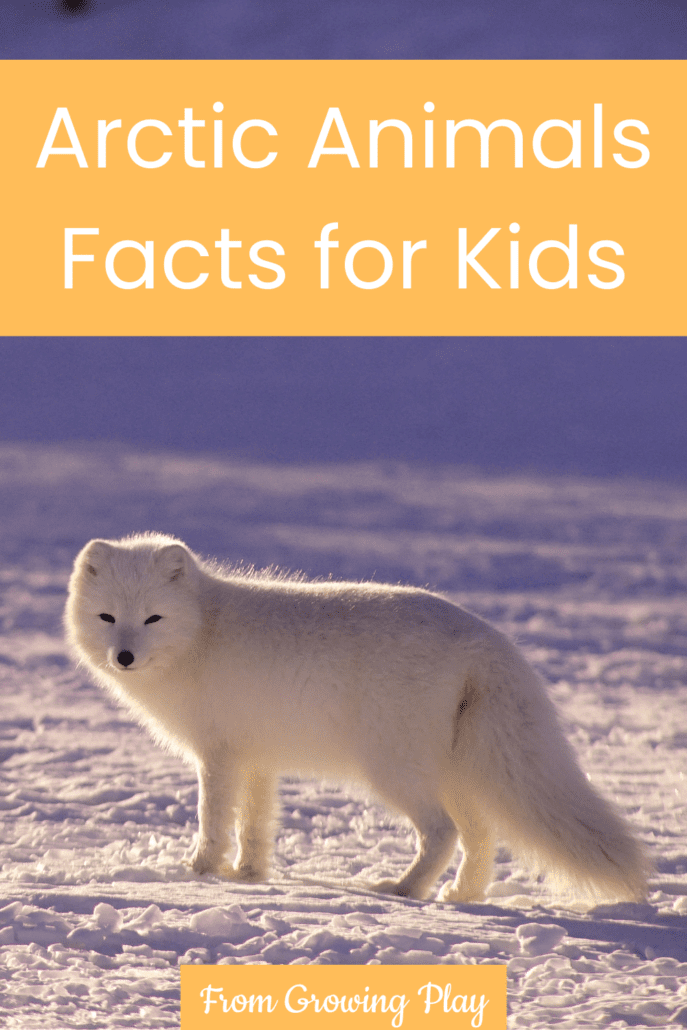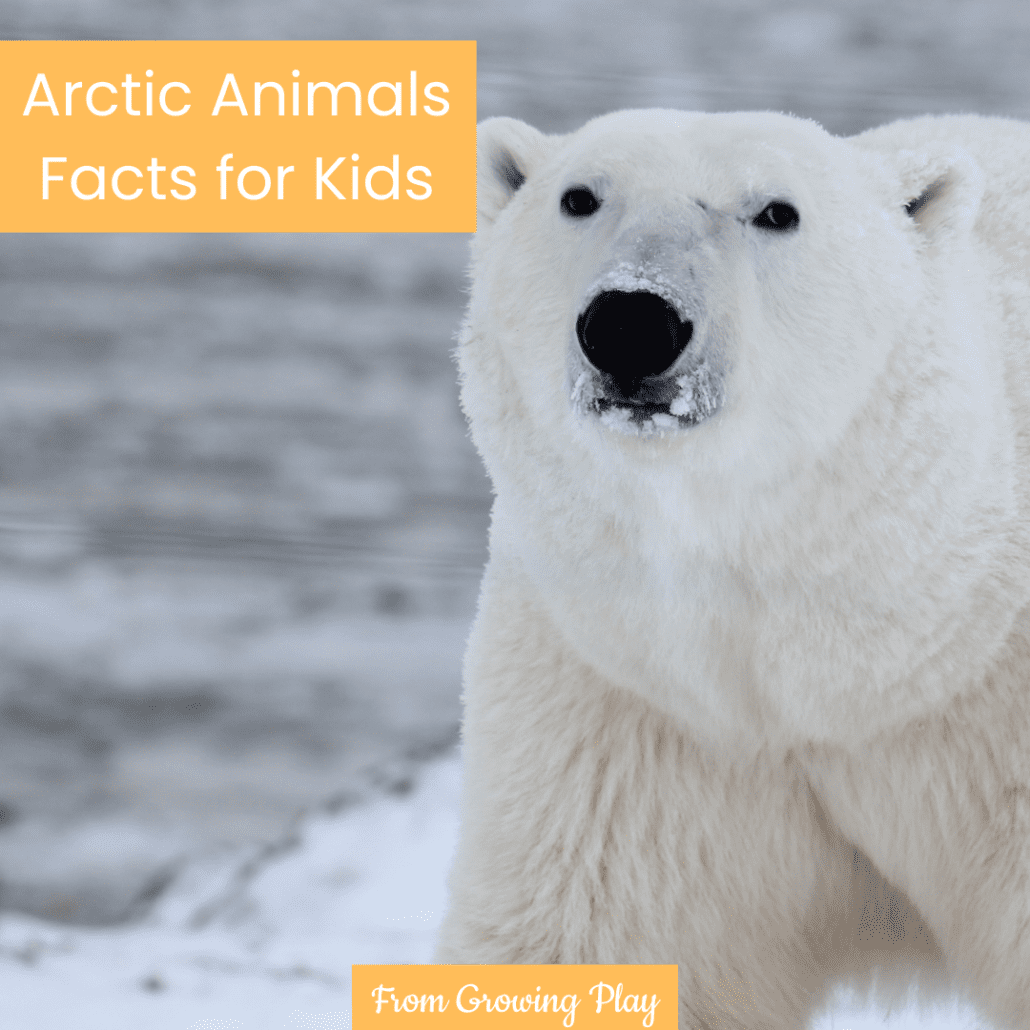Arctic Animals Facts for Kids

Do you love animals? How about arctic animals? Animals in the arctic are some of the most beautiful and fascinating creatures on Earth! From polar bears, to arctic foxes, to snowy owls, arctic hares, and the seal we will cover arctic animals facts for kids about each of these animals.
Do you have a favorite arctic animal? Maybe you love the polar bear because they are super cute as cubs. Or maybe you love how their white fur makes them stunning. Or the beauty of their size and stature. Whatever you love about the polar bears, you are sure to love them even more after reading this article!
Adaptations of Artic Animals
And you will love learning about the adaptations of the arctic foxes and the arctic hares. Both animals have thick fur coats to keep them warm and smaller ears to limit the opening to the cold and windy weather. Or how about the fact that arctic foxes can smell over a mile away! Can you smell that far?
Don’t forget about the snowy owls, who are some of the most beautiful creatures in my opinion. They have thousands of white and brown feathers to keep them warm and not to mention, absolutely stunning! They have long wingspans and can fly at speeds of up to 46 miles per hour!
And finally, we will talk about one of my favorite arctic animals, the arctic seals! Seals are super cute as pups and even when they grow into adults, they keep their big, beautiful eyes! Seals swim under the sea ice for hours at a time hunting for food or just playing around. Have you ever seen a seal play in the water? Don’t stand too close or you might get wet.
Now that you’ve learned a little bit about each of these incredible arctic creatures, I’m sure you can’t wait to learn even more. Get ready, get set, go!

Animal Care Pretend Play Packet
Arctic Animals Facts for Kids – Polar Bears Have Super Thick Fur
Polar bears have very thick fur to help protect them from the harsh environment of the arctic lands.
Some of the larger predators in the arctic include the polar bears. Polar bears are the largest bear species mainly eating seals, arctic foxes, and other marine and land mammals.
The majority of the population of polar bears live in the arctic circle. There are only about 26,000 polar bears in the entire world. Their population is being affected by global warming and climate change.
A baby polar bear is called a cub. At birth, the little bear has very fine white fur which actually makes the animal appear black. Any idea why? Because underneath all that white fur, the polar bear is actually jet black.
Arctic Animals Facts for Kids – Arctic Fox Facts
Arctic foxes have a thick coat of warm fur to help them survive in the cold arctic tundra. Their fur can be white, brown, or gray and their fur changes depending on the time of the year. How cool is that? Not to mention their extremely fluffy tails that make them some of the cutest creatures.
An arctic fox can smell a seal from a mile away! That’s a really good sense of smell!
Snowy Owls – Arctic Animals Facts for Kids
Snowy owls are one of the heaviest owl species on the planet! That’s because they have thousands of feathers to keep them warm in the cold temperatures of the arctic. Snowy owls even have feathers on their feet making it look like they are wearing slippers!
The wingspan of an adult snowy owl can range between four and five feet wide. Their wingspan is probably taller than you!
Snowy owls can travel at speeds up to 46 miles per hour! Can you imagine how many miles they can fly in a day?
Arctic Animals Facts for Kids – Arctic Hares
The arctic hare is the only rabbit in the world that lives in the arctic.
Arctic hares have adapted to the cold arctic environment with small ears, thick fur, and bushy tails. This all helps to keep the animal warm. In the extreme cold, arctic hares may also burrow underneath a blanket of snow.
From the front, arctic hares appear to have very short legs. Their hind legs or back legs are much longer to help them jump higher and with more power. An arctic hare can jump over two meters high, which means they could jump over you!

Guess the Bunny
Arctic Animals Facts for Kids – Seal Facts
Seals live in arctic waters, such as the Arctic Ocean. Some seals stay in the water for up to eight months without ever touching land! That’s a really long time to be underwater!
Seals can swim up to 35 kilometers per hour or 21 miles per hour. They swim much faster when they are hunting for food. Did you know that?
Baby seals are known as seal pups and are often born with a layer of white fur.
More About the Arctic
The Arctic is one of the coldest places on Earth. It’s crazy that all these amazing creatures live there! One of the most interesting things to me is that all these animals have developed adaptations to help them survive the cold and windy conditions. Almost all the animals in the arctic have thick fur or feathers to keep them warm. Arctic foxes and arctic hares have smaller ear openings to prevent snow and wind from entering.
There are so many different ways these arctic animals have adapted to living in the arctic. What would you do to adapt to living in these cold temperatures? Would you ever visit the arctic? You’ll definitely be cold, but it will be worth it to see all these incredible creatures out in the wild.

WANT MORE FUN FACTS FOR KIDS?
Check 100 fun facts for kids here and browse all the other topics at the bottom of the post.


